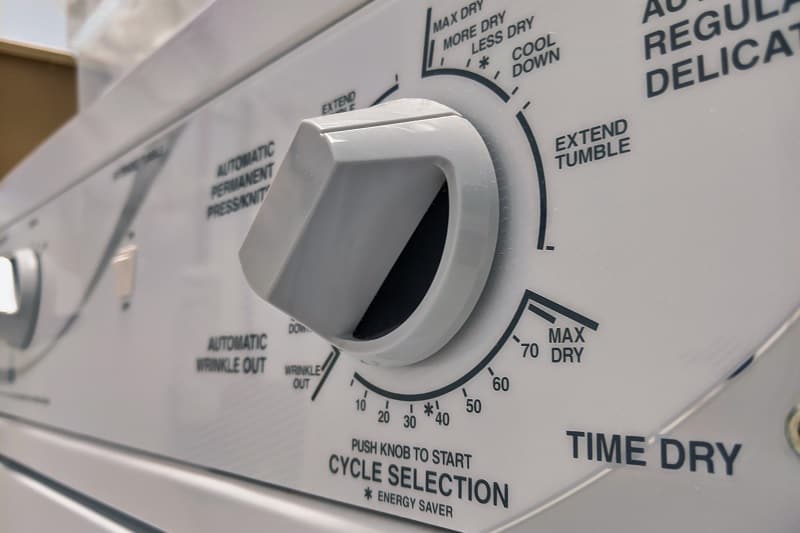There’s no doubt that tumble drying has made the process of doing laundry more convenient. With a tumble dryer, you can get your clothes dried and ready to wear in as little as 10 minutes.
Unfortunately, not all materials can be tumble dried, as some materials are too delicate. In addition to this, regular and long-term exposure to tumble drying can cause even sturdy materials to degrade faster.
You might be wondering how to dry clothes when they can’t be tumble dried, or when you want to give them a break from time to time.
In this article we look at the different ways you can dry your clothes if you aren’t pressed for time and what to do when you need your clothes to dry quickly.
When You’re Not in a Rush
Since many items of clothing can’t be tumble dried, there is no shortage of solutions for drying them efficiently. Plus, used in combination, these tips and tricks can help cut down on drying time.
1. Dry clothes on a clothing rack

This is the main way to dry clothes when you don’t have access to a tumble dryer. A clothing rack, also known as a clothes horse, can have different shapes but is composed of separate bars on which you hang each item of clothing.
When you hang your clothes on a drying rack, be sure to open them out fully, this includes pulling out pockets and unfolding cuffs. Make sure the clothes are not too close together otherwise they will take longer to dry.
It’s a good idea to rotate your clothing often so that all sides of the garment are exposed to the air.
Finally, if you want an item of clothing to dry faster than others, you can place it over multiple bars to expose more of it to the air or heat.
2. Dry clothes outside

One of the most efficient ways to dry clothes is by exposing them to airflow. Outdoors, they will get a gentle breeze which will dry them quickly without leaving a damp smell. In fact, many people say that drying clothes outside makes them smell even fresher.
If you have a garden or outdoor laundry space as part of your home, you can hang your clothes on a washing line. If not, you can dry clothes on a clothes horse next to an open window.
3. Dry clothes in the sun
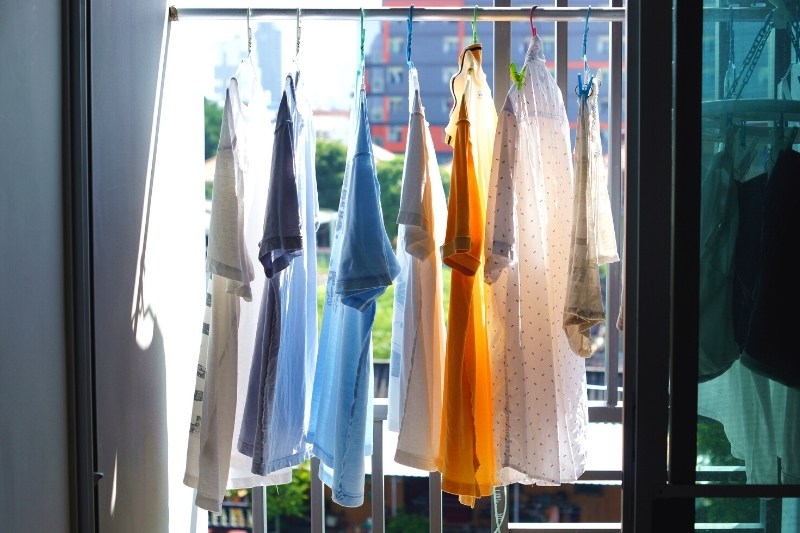
The direct rays from the sun are a great source of heat for drying clothes. Plus, even if it’s cold outside, and you don’t want to leave the window open, you can pop your clothes horse next to a window that gets direct sunlight.
However, be careful which items of clothing you dry in the sun as it can have a bleaching effect. Colourful clothing or delicate materials should not be exposed to a lot of direct sunlight.
4. Dry clothes in a warm room
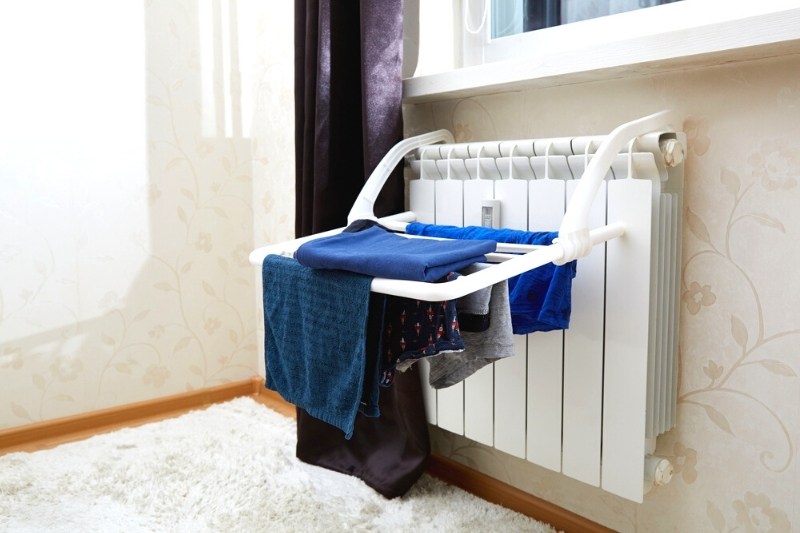
On cold, grey days, when there’s no sun and you don’t want to leave a window open, you can crank up the radiator and place your clothes horse next to it.
Most radiator manufacturers recommend that you don’t drape clothes directly over them as this is a fire hazard. Plus, the warm air needs to circulate around all the clothes, so they won’t dry as fast if something’s covering the heat source.
You can find clothing racks that are specifically designed to hang over radiators which avoids the potential danger of placing clothes directly over them.
Turning up the temperature won’t make much difference if the heat is escaping through a crack in the door, so be sure to close doors and windows when you’re drying clothes, to keep in the heat.
5. Let your clothes drip-dry in the bathroom
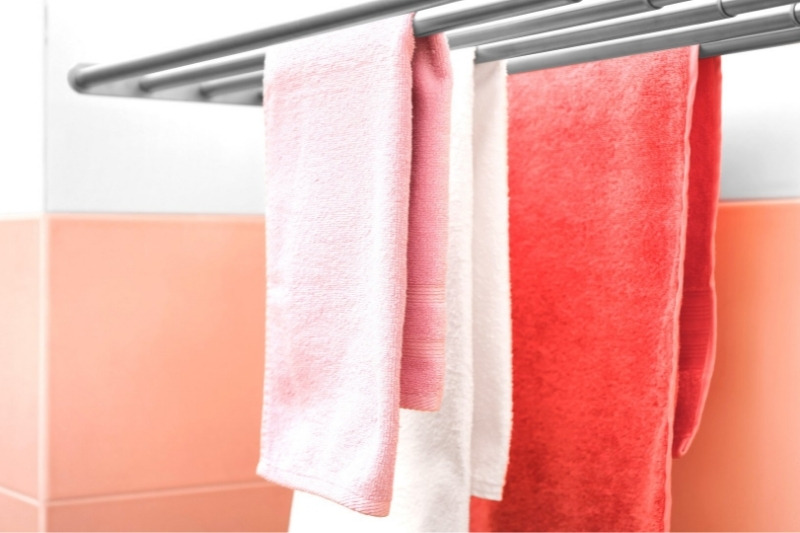
If you hand wash clothes and they are soaking wet, you can hang them in the bath or shower to drip-dry, to avoid getting your floors wet. They can be moved to another room once they stop dripping.
You can use clothes hangers for this, but there are also drying racks designed especially for use in showers and baths.
6. Invest in a dehumidifier
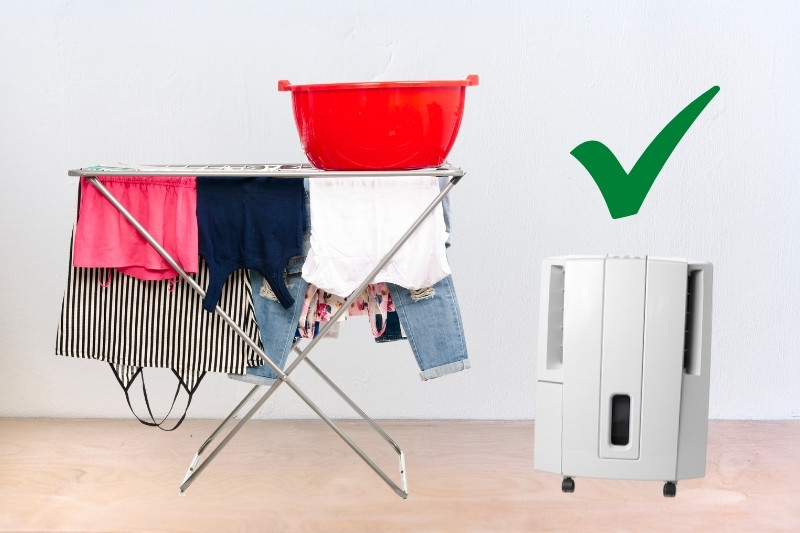
Some people don’t have a separate room for drying laundry so they have to put their wet clothes wherever there is space. This can cause condensation, humidity and even damp mould.
To avoid this, place a dehumidifier close to your drying rack, as they absorb moisture from the air helping clothes to dry sooner.
In a Hurry
Sometimes you don’t have time to wait for your favourite jeans to dry on their own, you need them now! When you can’t tumble dry your clothing, you can use one of the following methods to speed up the drying process.
1. Choose a high spin cycle
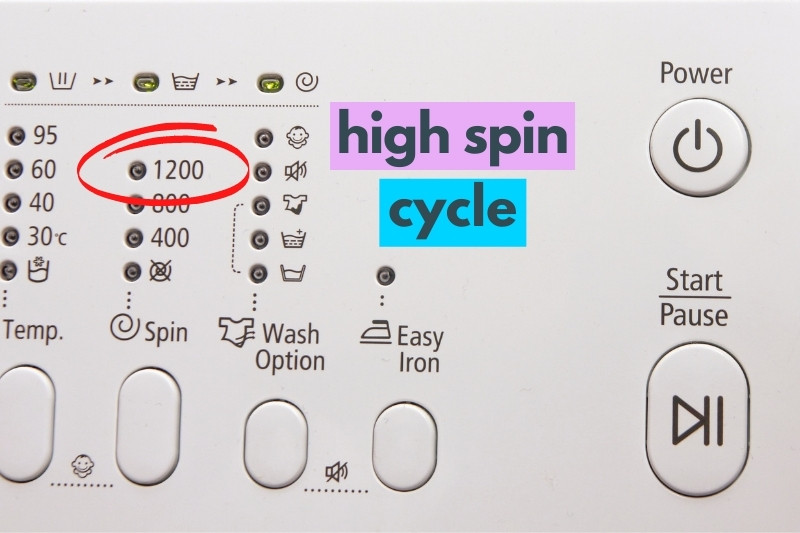
This method isn’t appropriate for delicate items such as wool or silk. However, in a pinch, you could increase the spin speed on your machine as this will remove more water before your clothes come out.
2. Use a towel
If you forget to increase the spin cycle and your clothes come out quite damp, you can use a towel to soak up some of the excess moisture.
To do this, place the item flat on a dry towel and roll the towel up with the garment inside it. Once the towel is fully rolled, you can squeeze it to try and wring out even more moisture.
3. Use an iron
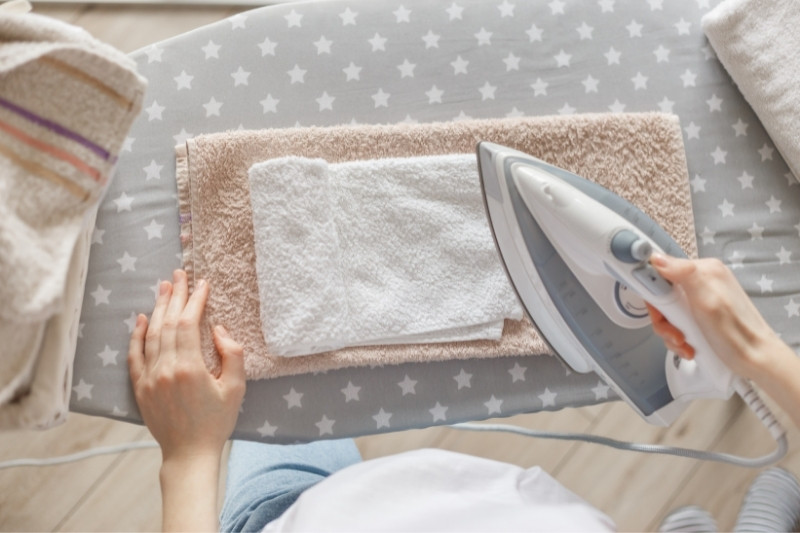
An iron can help dry clothes faster as it applies heat to clothes in a safer way than a tumble dryer.
Never place an iron directly on a wet item of clothing. Instead, place the item of clothing on the ironing board and cover it with a dry towel. Increase the iron temperature to high and iron the towel as usual.
Flip the item of clothing over, keeping the towel placed on top of it, and this should remove some of the excess moisture.
4. Use a hair dryer
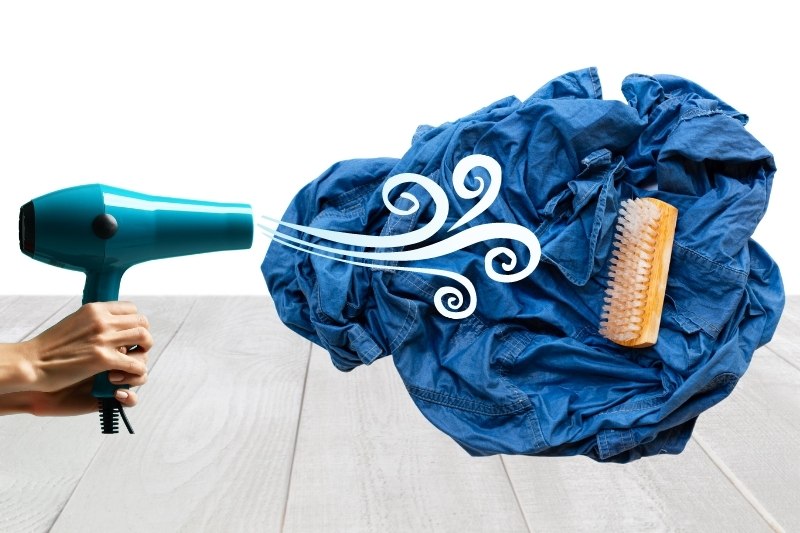
This is the same principle as a tumble dryer, as you blast your clothing with heat. However, the heat from a hairdryer isn’t as intense as a tumble dryer and your clothes won’t be spinning around at high speeds.
Simply hang your item of clothing up or lay it flat and blast it with the hairdryer. Make sure to start from the inside out and rotate the item often. Don’t put the hair dryer too close to the item, and avoid drying the same spot for a long time.

In The Wash is your guide to the best laundry and cleaning products, tips and tricks. Our mission is to solve the UK’s cleaning and laundry dilemmas!





